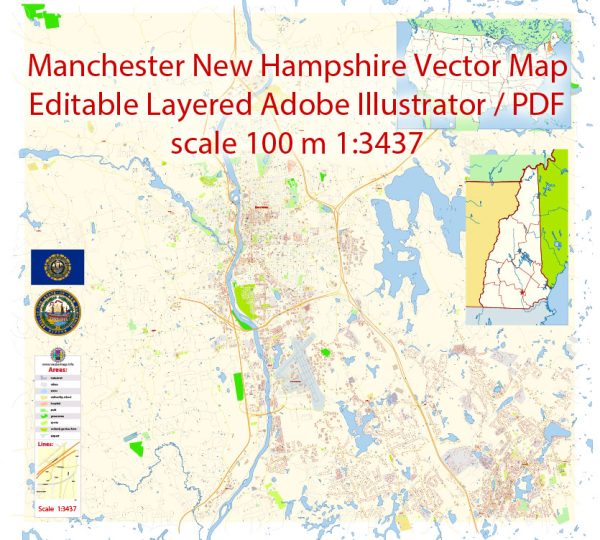Manchester, New Hampshire, like many cities in the United States, has a diverse architectural landscape that reflects its historical development and the changing styles and needs of its residents. Here’s an overview of architectural features and styles you can find in Manchester:
- Colonial Architecture: Manchester’s early history is tied to colonial times, and you can find some buildings that reflect this period. Colonial architecture is characterized by simple, symmetrical designs, gable roofs, and often features brick or wood construction.
- Victorian Architecture: The Victorian era brought ornate and decorative styles to architecture. In Manchester, you can find Victorian homes with intricate details, steep roofs, and large, wrap-around porches. Some examples include the Queen Anne style and Second Empire style.
- Industrial Architecture: During the 19th and early 20th centuries, Manchester was a thriving industrial city, particularly in the textile and mill industries. Many of the city’s historic mill buildings have been repurposed into residential or commercial spaces. These buildings often have red brick facades, large windows, and exposed wooden beams.
- Art Deco and Art Moderne: In the early 20th century, these styles became popular, and some commercial and public buildings in Manchester showcase elements of Art Deco and Art Moderne design. Look for geometric patterns, sleek lines, and the use of materials like terracotta and glass.
- Mid-Century Modern: Post-World War II, mid-century modern architecture emerged. Characterized by clean lines, large windows, and a focus on functional design, you can find some mid-century modern homes and buildings in Manchester.
- Contemporary Architecture: As the city has grown and modernized, contemporary architecture has become more prevalent. This style often features a mix of materials, open spaces, and a focus on energy efficiency and sustainable design.
- Revitalized Downtown: Manchester’s downtown area has seen significant revitalization efforts. You’ll find a mix of historic and contemporary buildings. Some have preserved their original facades while incorporating modern interiors.
- Cultural Institutions: The city boasts a range of cultural institutions, including the Currier Museum of Art, which itself is a work of art with its modern design and glass entrance.
- Religious Architecture: Manchester is home to various churches, reflecting different architectural styles. You can find traditional New England churches alongside more modern designs.
- Residential Diversity: Residential architecture in Manchester varies from historic single-family homes and multi-family dwellings to modern apartment complexes and condos.
It’s important to note that architectural styles can vary widely even within one city, and Manchester is no exception. The architectural landscape has evolved with time and continues to do so, as new buildings and renovations contribute to the city’s changing character. When exploring Manchester, you’ll find a blend of the city’s rich history and its contemporary development.


 Author: Kirill Shrayber, Ph.D.
Author: Kirill Shrayber, Ph.D.